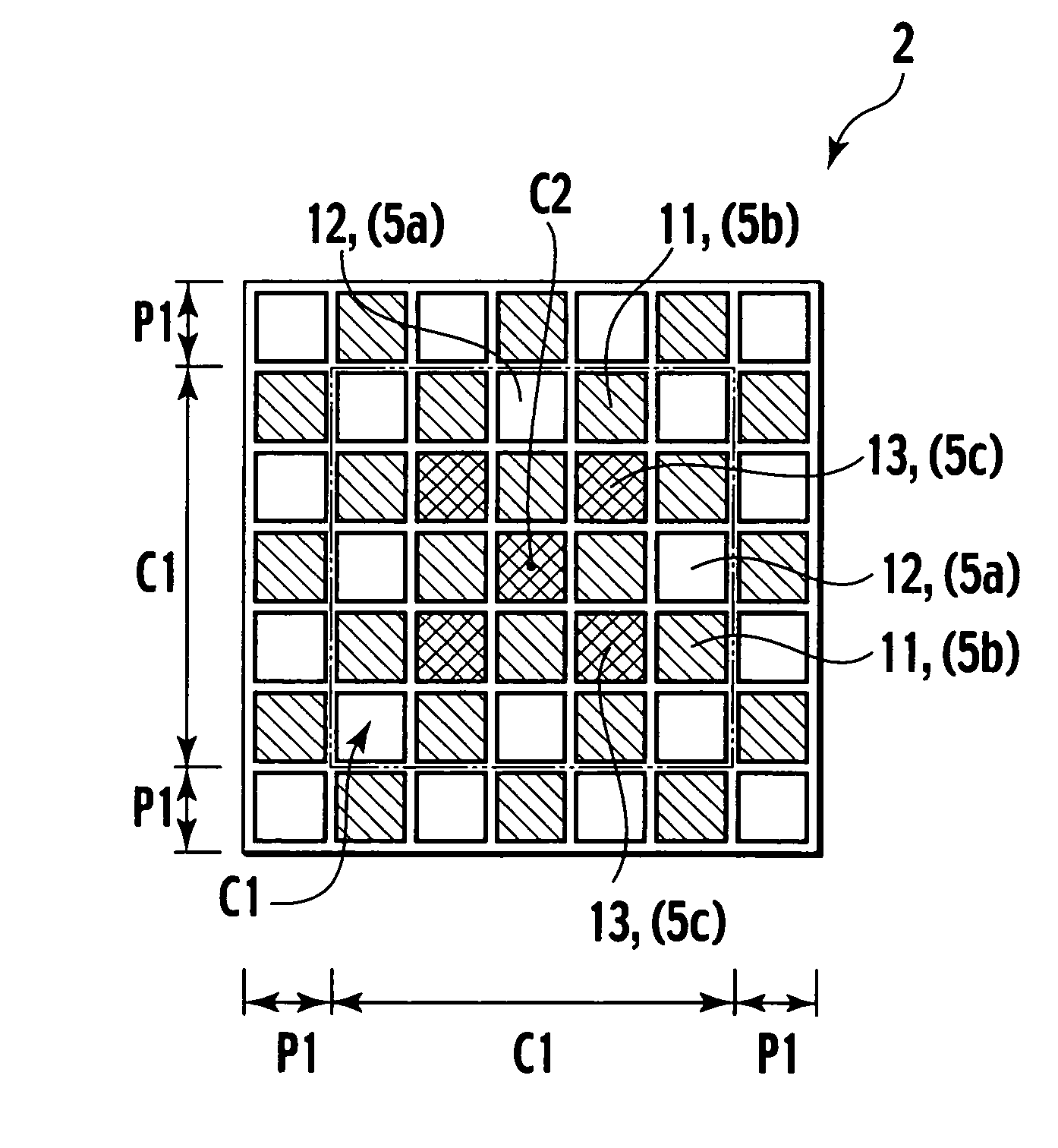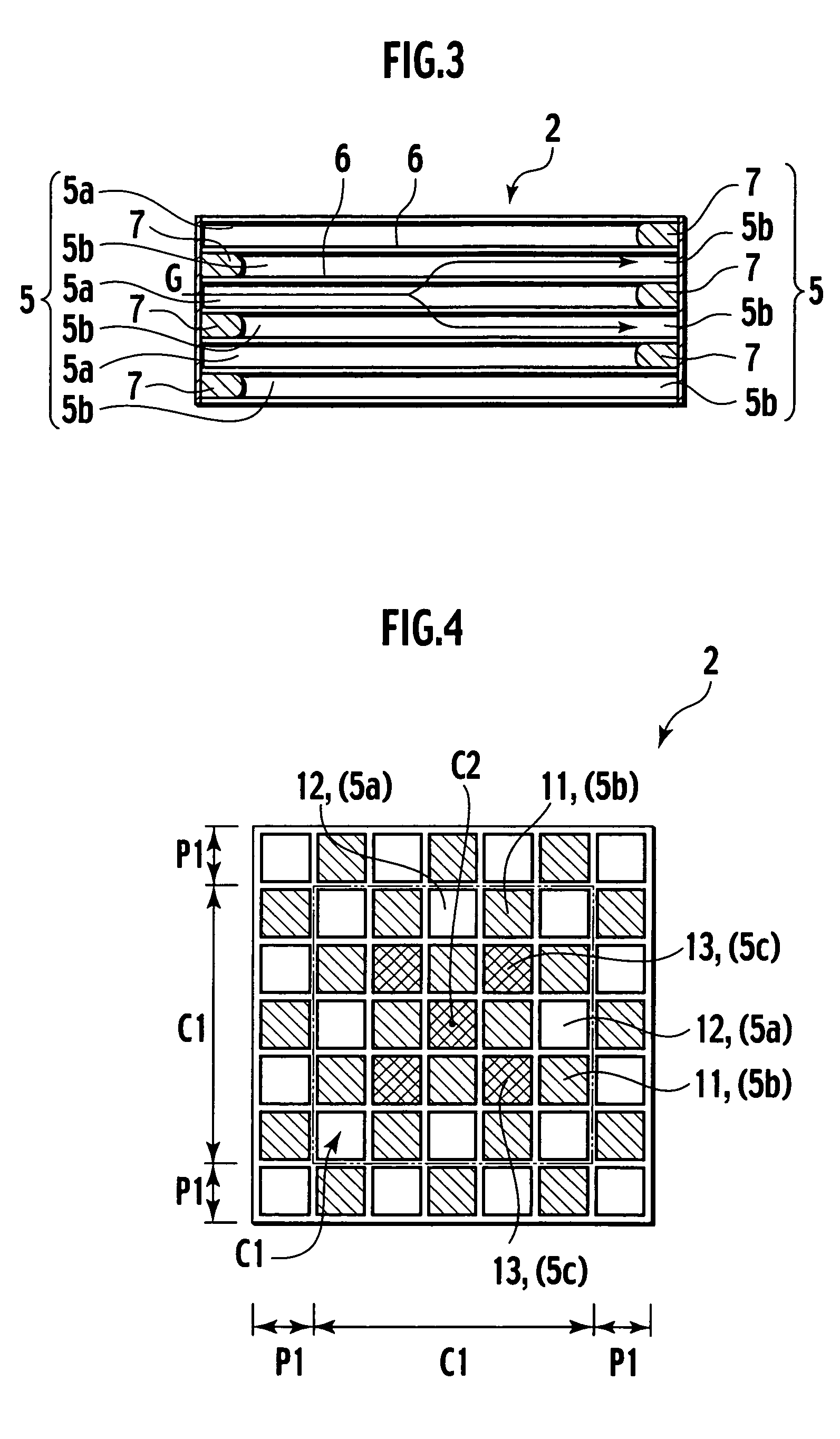Ceramic filter
a ceramic filter and filter body technology, applied in the field of ceramic filters, can solve the problems of limiting the maximum temperature of the ceramic filter, difficult control and lack of versatility, and complex structure, and achieve the effects of reducing temperature rise, simple structure, and small amount of heat generated by soot burning
- Summary
- Abstract
- Description
- Claims
- Application Information
AI Technical Summary
Benefits of technology
Problems solved by technology
Method used
Image
Examples
example
[0052]Honeycomb segments were prepared, each of which has a square cross section with a side length of 35 mm. The plurality of honeycomb segments are bonded together, thus preparing cylindrical ceramic filters (DPF) illustrated in FIG. 1. The length and number of honeycomb segments integrated therein and the outer diameter of the ceramic filter (DPF) are shown in Table 1.
[0053]The wording “cell structure” in Table 1 means the inlet size of vents formed in the honeycomb segment used. The ratio “10 / 300” indicates (wall thickness) / (cell density). The wall thickness of “10” indicates 10 min mil=0.0254 mm). The cell density of “300” indicates 300 cpsi (cell per square inch).
[0054]The wording “additional filling number in the central portion” means the number of inlets of vents additionally filled in the central portion of a checkerboard pattern in which filled inlets and non-filled open inlets are alternately placed to be neighboring to each other. The wording “additional filling area in...
PUM
| Property | Measurement | Unit |
|---|---|---|
| side length | aaaaa | aaaaa |
| temperature | aaaaa | aaaaa |
| pressure | aaaaa | aaaaa |
Abstract
Description
Claims
Application Information
 Login to View More
Login to View More - R&D
- Intellectual Property
- Life Sciences
- Materials
- Tech Scout
- Unparalleled Data Quality
- Higher Quality Content
- 60% Fewer Hallucinations
Browse by: Latest US Patents, China's latest patents, Technical Efficacy Thesaurus, Application Domain, Technology Topic, Popular Technical Reports.
© 2025 PatSnap. All rights reserved.Legal|Privacy policy|Modern Slavery Act Transparency Statement|Sitemap|About US| Contact US: help@patsnap.com



